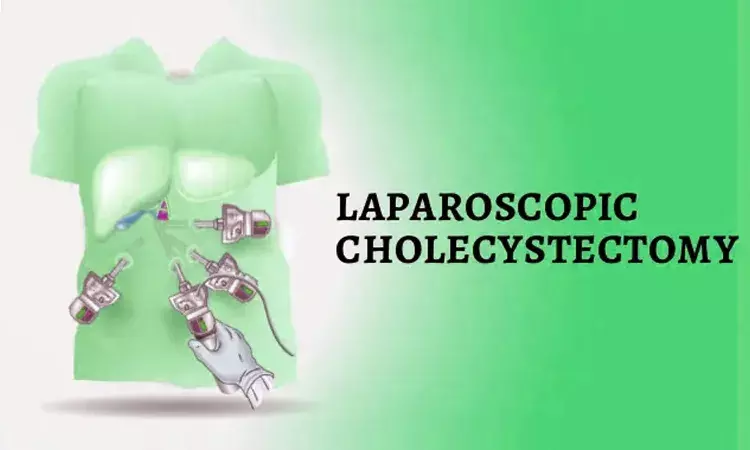- Home
- Medical news & Guidelines
- Anesthesiology
- Cardiology and CTVS
- Critical Care
- Dentistry
- Dermatology
- Diabetes and Endocrinology
- ENT
- Gastroenterology
- Medicine
- Nephrology
- Neurology
- Obstretics-Gynaecology
- Oncology
- Ophthalmology
- Orthopaedics
- Pediatrics-Neonatology
- Psychiatry
- Pulmonology
- Radiology
- Surgery
- Urology
- Laboratory Medicine
- Diet
- Nursing
- Paramedical
- Physiotherapy
- Health news
- Fact Check
- Bone Health Fact Check
- Brain Health Fact Check
- Cancer Related Fact Check
- Child Care Fact Check
- Dental and oral health fact check
- Diabetes and metabolic health fact check
- Diet and Nutrition Fact Check
- Eye and ENT Care Fact Check
- Fitness fact check
- Gut health fact check
- Heart health fact check
- Kidney health fact check
- Medical education fact check
- Men's health fact check
- Respiratory fact check
- Skin and hair care fact check
- Vaccine and Immunization fact check
- Women's health fact check
- AYUSH
- State News
- Andaman and Nicobar Islands
- Andhra Pradesh
- Arunachal Pradesh
- Assam
- Bihar
- Chandigarh
- Chattisgarh
- Dadra and Nagar Haveli
- Daman and Diu
- Delhi
- Goa
- Gujarat
- Haryana
- Himachal Pradesh
- Jammu & Kashmir
- Jharkhand
- Karnataka
- Kerala
- Ladakh
- Lakshadweep
- Madhya Pradesh
- Maharashtra
- Manipur
- Meghalaya
- Mizoram
- Nagaland
- Odisha
- Puducherry
- Punjab
- Rajasthan
- Sikkim
- Tamil Nadu
- Telangana
- Tripura
- Uttar Pradesh
- Uttrakhand
- West Bengal
- Medical Education
- Industry
Robotic-Assisted Cholecystectomy associated with High Bile Duct Injury Rates: JAMA

The adoption of robotic-assisted cholecystectomy, a modern surgical technique, has been on the rise, with proponents claiming improved safety and precision. However, a recent study published in Journal of American Medical Association shed light on the comparative safety of robotic-assisted cholecystectomy versus the traditional laparoscopic approach. This analysis from Medicare beneficiaries over a ten-year period, raises questions about the safety of robotic-assisted cholecystectomy when compared to its laparoscopic counterpart.
The study, conducted between January 1, 2010, and December 31, 2019, examined the records of over one million Medicare beneficiaries aged 66 to 99 who underwent cholecystectomy. It focused on patients with continuous Medicare coverage three months before and twelve months after surgery. The primary objective was to determine the rate of bile duct injury requiring surgical repair within one year after the procedure.
The findings of the study revealed a significant increase in the utilization of robotic-assisted cholecystectomy, soaring 37-fold from 0.1% of cases in 2010 to 5.2% in 2019. However, the critical discovery was that compared to laparoscopic cholecystectomy, the robotic approach was associated with a substantially higher rate of bile duct injuries necessitating surgical reconstruction within one year (0.7% vs. 0.2%). This represented a relative risk increase of 3.16.
Additionally, robotic-assisted cholecystectomy patients faced a higher likelihood of postoperative biliary interventions, such as endoscopic stenting (7.4% vs. 6.0%). Surprisingly, there was no significant difference in overall 30-day complication rates between the two procedures.
To address potential confounding factors, the study employed instrumental variable analysis, leveraging regional variations in the adoption of robotic-assisted cholecystectomy. This analysis also indicated a higher rate of bile duct injury with the robotic approach (0.4% vs. 0.2%).
The study suggests that the increasing popularity of robotic-assisted cholecystectomy may need to be reconsidered, especially when compared to the already minimally invasive and predictably safe laparoscopic technique. While robotic surgery offers certain advantages, including improved precision, these benefits appear to be outweighed by the increased risk of bile duct injuries, a complication that can lead to more invasive and extensive treatments.
Reference:
Kalata, S., Thumma, J. R., Norton, E. C., Dimick, J. B., & Sheetz, K. H. (2023). Comparative Safety of Robotic-Assisted vs Laparoscopic Cholecystectomy. In JAMA Surgery. American Medical Association (AMA). https://doi.org/10.1001/jamasurg.2023.4389
Neuroscience Masters graduate
Jacinthlyn Sylvia, a Neuroscience Master's graduate from Chennai has worked extensively in deciphering the neurobiology of cognition and motor control in aging. She also has spread-out exposure to Neurosurgery from her Bachelor’s. She is currently involved in active Neuro-Oncology research. She is an upcoming neuroscientist with a fiery passion for writing. Her news cover at Medical Dialogues feature recent discoveries and updates from the healthcare and biomedical research fields. She can be reached at editorial@medicaldialogues.in
Dr Kamal Kant Kohli-MBBS, DTCD- a chest specialist with more than 30 years of practice and a flair for writing clinical articles, Dr Kamal Kant Kohli joined Medical Dialogues as a Chief Editor of Medical News. Besides writing articles, as an editor, he proofreads and verifies all the medical content published on Medical Dialogues including those coming from journals, studies,medical conferences,guidelines etc. Email: drkohli@medicaldialogues.in. Contact no. 011-43720751


